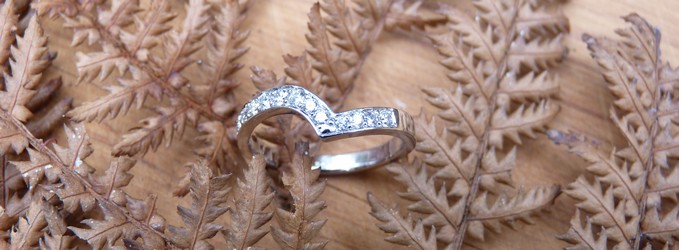My white gold is turning yellow! What's the deal?!

How is white gold made? Why does it start turning yellow? And what can you do about it? In this blog we’re going to answer all these questions and more.
How is white gold made?
While gold can vary in quality and purity, its colour does not: gold is always yellow.So, what is white gold?
Essentially, white gold gets its colour from alloys such as nickel and palladium, which are mixed into the yellow gold to give it a paler hue.
Nickel is the less expensive option, but so many people are allergic to it that it’s banned in jewellery in Europe. Consequently, this type of white gold is rarely available and most jewellers (including us) will strongly recommend against wearing any nickel-based items.
Palladium, on the other hand, is hypoallergenic (though there are some exceptionally rare cases of palladium allergies) and belongs to the platinum metals group. Most modern white gold jewellery you’ll find in New Zealand uses palladium as an alloy. An 18ct white gold palladium alloy ring consists of 75 percent pure gold and 25 percent palladium.
Even with these alloys, white gold in its original form retains a bit of a yellowish tinge, which isn’t too surprising given that the majority of it is still yellow gold. To counteract this and give your ring a dazzling white gleam, most white gold jewellery on the market today is plated with rhodium.
What is rhodium?
A by-product of platinum mining, rhodium is an incredibly precious metal that is often far more expensive than gold. Its dazzlingly white colour complements the sparkle of many gemstones (including diamonds) and catches the eye like no other metal, but its brittle structure and high price means that it’s impractical for use as a base metal in jewellery making.Instead, it’s used as a plating, which really enhances the shine of white gold jewellery and provides that otherworldly sparkle that so many people look for in an engagement ring.
Why can I see yellow spots in my white gold ring?
As we’ve learnt, white gold, while whiter than traditional yellow gold, is still not truly white. To achieve a brighter, glittering white, jewellers apply a rhodium plating to white gold jewellery.However, over time and with repeated wear, the rhodium plating on white gold jewellery will naturally wear away, revealing patches of yellow and/or off-whites. It’s difficult to put an exact timeframe on this - for an engagement ring you could expect to start to see yellowing within 12 months, while lesser-worn pieces such as earrings or a brooch might retain their glittering white for years and years.
Regardless, you’ll know this is happening when yellow spots and/or streaks start to appear in your jewellery. As you might imagine, the effect is far more pronounced in rhodium plated yellow gold than rhodium plated white gold due to greater contrast in the former.
Where can I get my ring rhodium plated in Auckland?
If your white gold engagement ring is starting to look a little yellow in places, the good news is that you can easily restore it to its former shining glory. Bring your white gold rings in and we can apply a new rhodium plating and have your rings looking as good as new in just a few days. In addition, although rhodium is such a valuable metal, only a small amount is used to plate your ring, so the cost to have your ring re-plated (prices start from just $75) is more than justified by the amazing results.Looking for an Auckland jeweller to rhodium plate your white gold rings?
Give us a call on 0211846467, send us an email or book an appointment to come to our North Shore, Auckland studio. We’d love to help.













